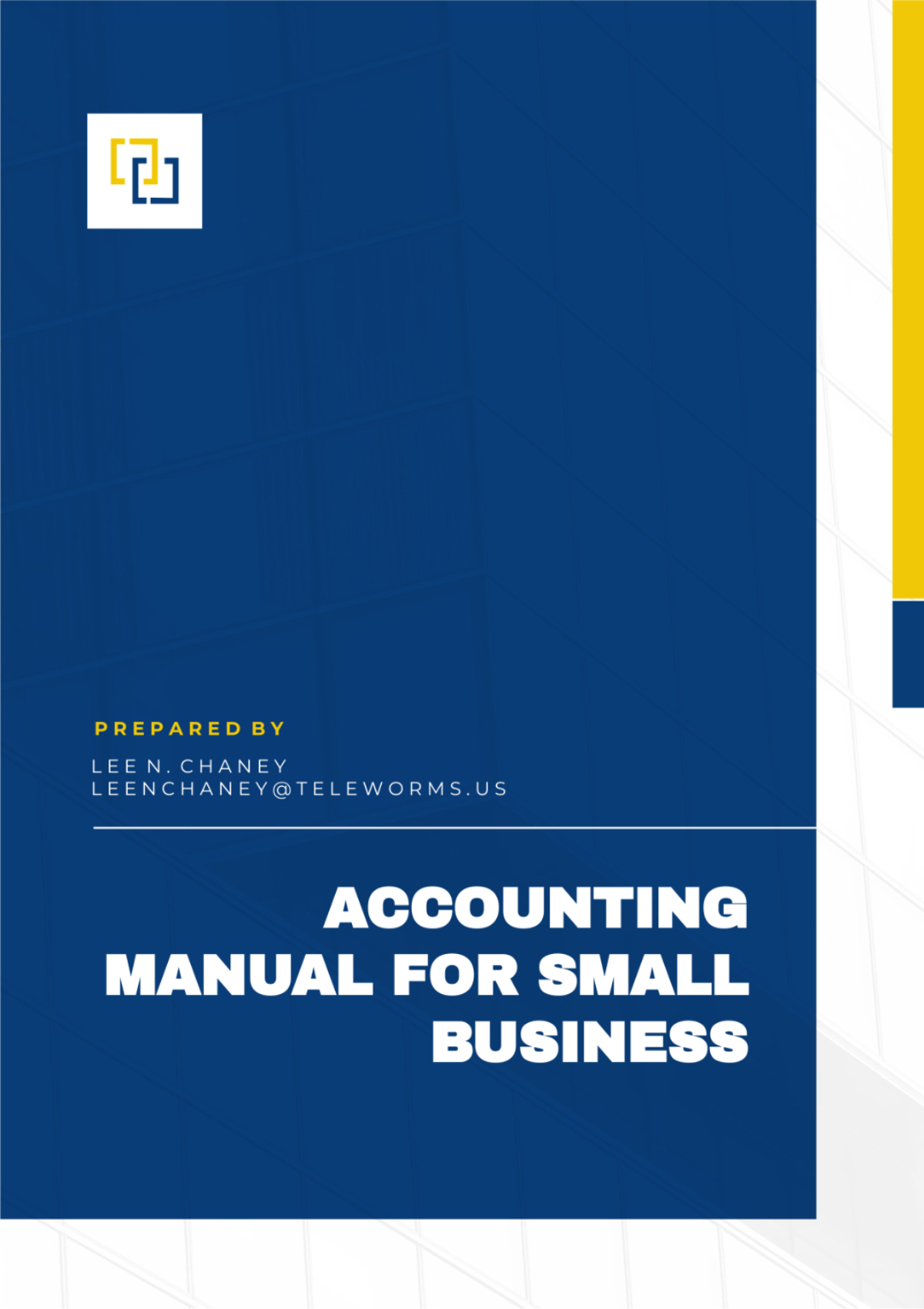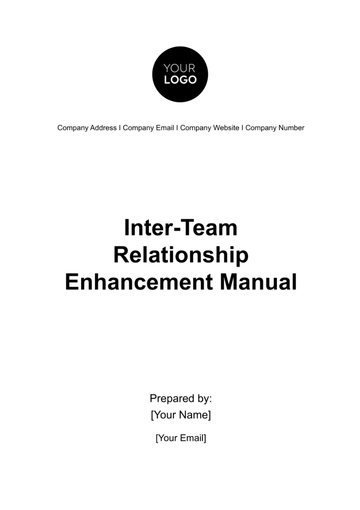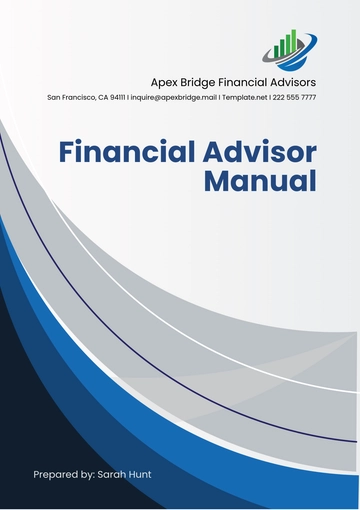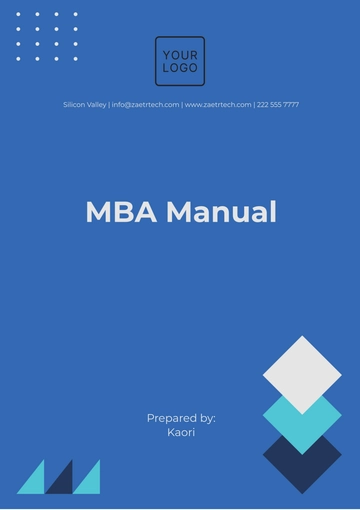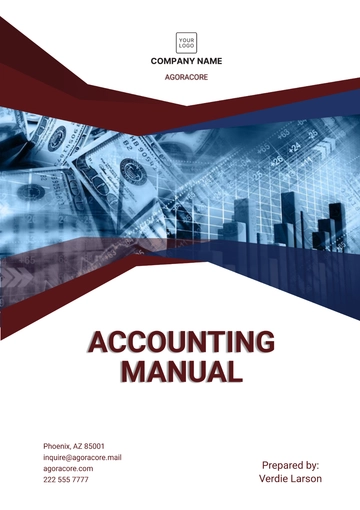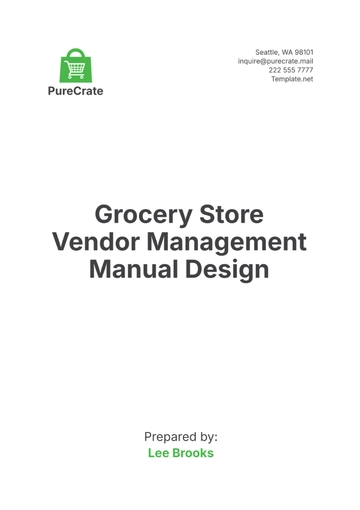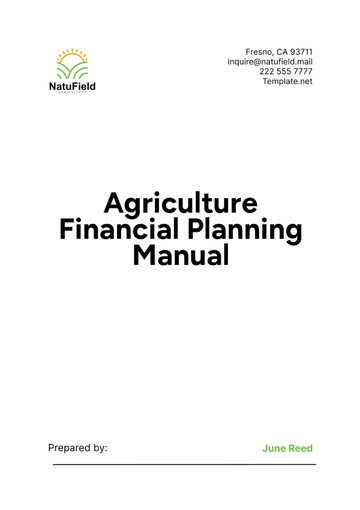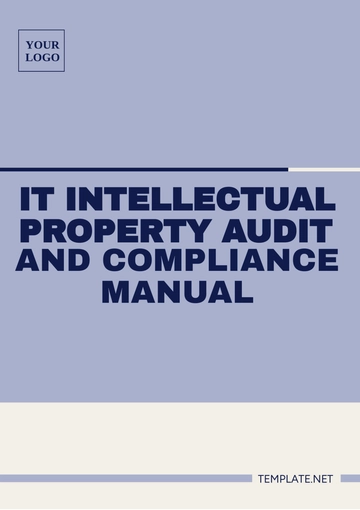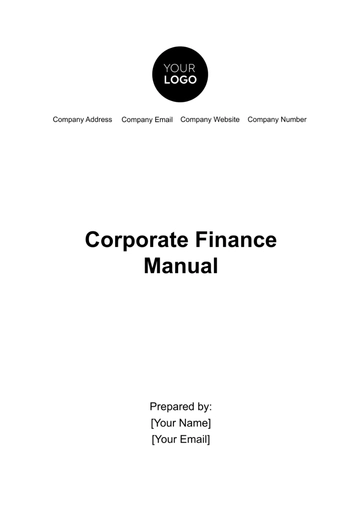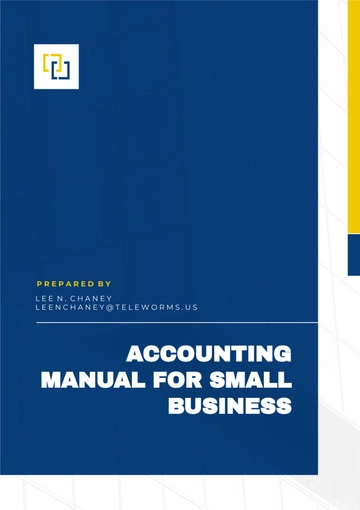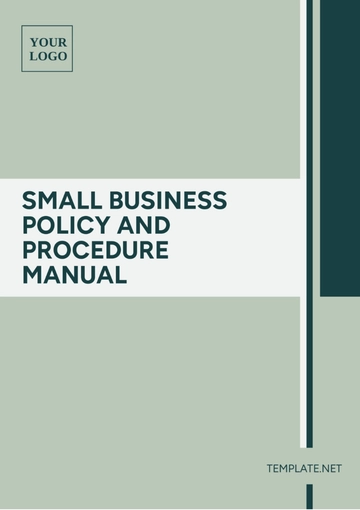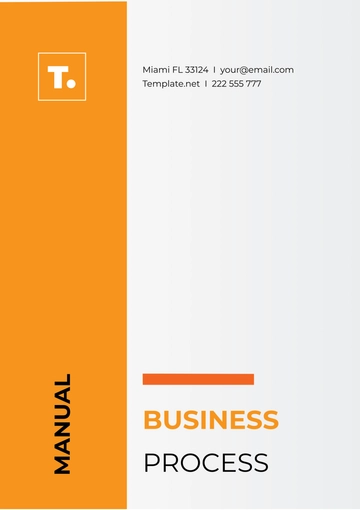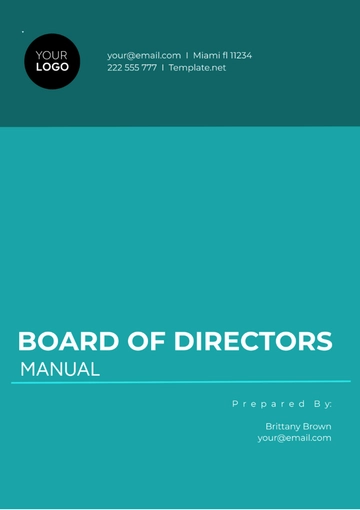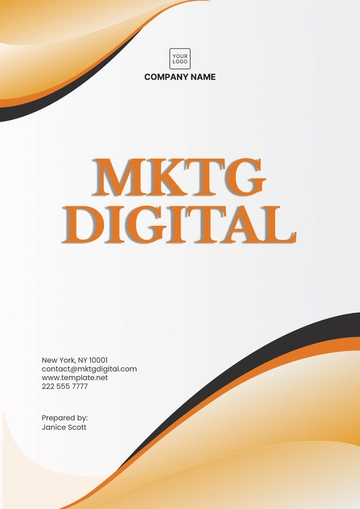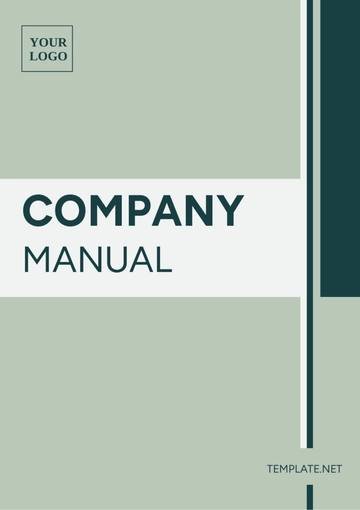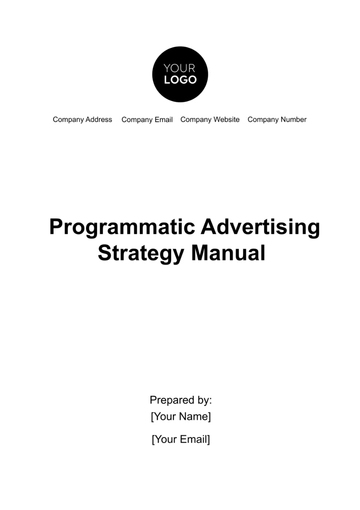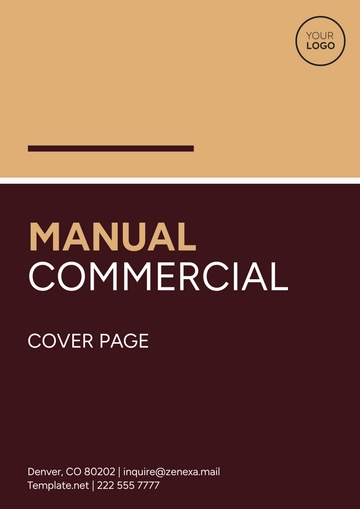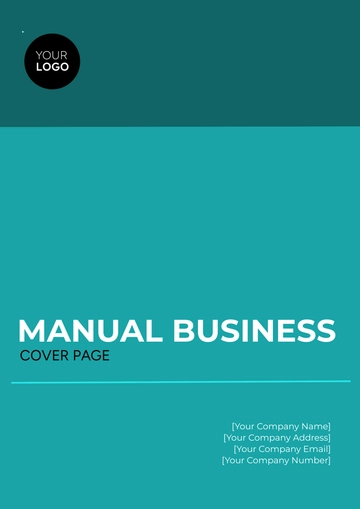Accounting Manual for Small Business
Prepared By | [YOUR NAME] |
|---|
Company | [YOUR COMPANY NAME] |
|---|
Department | [YOUR DEPARTMENT] |
|---|
Date | [CURRENT DATE] |
|---|
I. Introduction
In today's dynamic business environment, effective financial management is crucial for the success of any small business. The [YOUR COMPANY NAME]Accounting Manual serves as a comprehensive guide to streamline your accounting processes and ensure accuracy in financial reporting. This manual outlines the fundamental principles and procedures to maintain organized and transparent financial records, empowering [YOUR DEPARTMENT] to make informed decisions and achieve financial stability.
Purpose of the Manual
The primary objective of the Accounting Manual is to establish standardized accounting practices that align with regulatory requirements and industry best practices. By following the guidelines outlined in this manual, [YOUR COMPANY NAME] aims to:
Ensure Compliance: Adhere to legal and regulatory obligations related to financial reporting and taxation.
Facilitate Decision Making: Provide accurate and timely financial information to support strategic decision-making.
Enhance Transparency: Maintain transparency in financial transactions and reporting to stakeholders.
Mitigate Risks: Identify and mitigate financial risks through effective control measures and internal audits.
II. Accounting Policies and Procedures
A. General Accounting Principles
1. Accrual Basis Accounting
[YOUR COMPANY NAME] follows the accrual basis of accounting, where revenues and expenses are recognized when earned or incurred, regardless of when cash transactions occur. This method provides a more accurate depiction of the company's financial position and performance.
2. Revenue Recognition
Revenue is recognized when it is earned and realized or realizable, and expenses are recognized when they are incurred. Revenue from sales of goods is recognized at the point of delivery, while revenue from services is recognized as services are performed.
B. Chart of Accounts
The Chart of Accounts is a structured list of all general ledger accounts used by [YOUR COMPANY NAME] to record transactions. It provides a systematic framework for classifying financial transactions and generating meaningful financial reports. The Chart of Accounts is organized into categories such as assets, liabilities, equity, revenue, and expenses, with each account assigned a unique code for identification purposes.
C. Financial Reporting
1. Balance Sheet
The Balance Sheet provides a snapshot of [YOUR COMPANY NAME]'s financial position at a specific point in time, detailing its assets, liabilities, and equity. It reflects the company's solvency and liquidity, enabling stakeholders to assess its financial health and stability.
2. Income Statement
The Income Statement, also known as the Profit and Loss Statement, summarizes [YOUR COMPANY NAME]'s revenues, expenses, and net income over a specific period. It provides insights into the company's profitability and operational performance, serving as a key indicator of its financial success.
III. Internal Controls and Compliance
A. Segregation of Duties
To prevent fraud and errors, [YOUR COMPANY NAME] implements a system of segregation of duties, whereby responsibilities for authorizing, recording, and reconciling transactions are divided among different individuals. This ensures checks and balances in the accounting process and reduces the risk of unauthorized activities.
B. Documentation and Recordkeeping
Accurate and comprehensive documentation is essential for maintaining transparency and accountability in financial transactions. [YOUR COMPANY NAME] maintains detailed records of all financial activities, including invoices, receipts, bank statements, and supporting documentation, in accordance with regulatory requirements and internal policies.
C. Audit and Review Procedures
Regular audits and reviews are conducted to evaluate the effectiveness of [YOUR COMPANY NAME]'s accounting processes and internal controls. External audits are performed by independent auditors to assess compliance with legal and regulatory requirements, while internal audits are conducted by [Your Department] to identify areas for improvement and mitigate risks.
IV. Financial Transactions and Reporting
A. Accounts Payable
1. Invoice Processing
Upon receipt of invoices from vendors, [YOUR DEPARTMENT] verifies the accuracy of the billing information, including quantities, prices, and terms. Invoices are then approved for payment and recorded in the accounting system. Timely processing of invoices ensures smooth cash flow management and fosters positive vendor relationships.
2. Payment Disbursement
Payments to vendors are made in accordance with agreed-upon terms and payment schedules. [YOUR COMPANY NAME] utilizes various payment methods, such as checks, electronic funds transfers (EFTs), and online payment platforms, to settle accounts payable. Payment processing is closely monitored to prevent duplicate payments and unauthorized transactions.
B. Accounts Receivable
1. Invoicing and Billing
[YOUR DEPARTMENT] generates invoices for products sold or services rendered to customers, clearly outlining the terms of payment and due dates. Timely and accurate invoicing facilitates prompt payment from customers and minimizes the risk of overdue accounts. Invoices are sent via email, mail, or electronic billing platforms, depending on customer preferences.
2. Credit Control
To manage credit risk effectively, [YOUR COMPANY NAME] implements credit control measures to assess the creditworthiness of customers and establish credit limits. Credit terms are communicated clearly to customers, and overdue accounts are followed up promptly to facilitate debt collection. By monitoring accounts receivable closely, [YOUR DEPARTMENT] ensures timely collection of outstanding balances.
V. Financial Analysis and Decision Support
A. Budgeting and Forecasting
1. Budget Development
[YOUR COMPANY NAME] develops annual operating budgets based on projected revenues, expenses, and capital expenditures. Budgets are aligned with strategic objectives and departmental goals, providing a roadmap for financial planning and resource allocation. Regular budget reviews and revisions enable [YOUR DEPARTMENT] to adapt to changing market conditions and business priorities.
2. Variance Analysis
Variance analysis compares actual financial performance against budgeted expectations, identifying discrepancies and deviations that require attention. By analysing variances in revenues, expenses, and key performance indicators (KPIs), [YOUR DEPARTMENT] gains insights into operational efficiency and financial performance, enabling proactive decision-making and corrective actions.
VI. Conclusion
The [YOUR COMPANY NAME] Accounting Manual serves as a comprehensive resource to guide [YOUR DEPARTMENT] in establishing sound accounting practices and procedures. By adhering to the guidelines outlined in this manual, [YOUR COMPANY NAME] can enhance financial transparency, compliance, and decision-making capabilities, fostering long-term growth and success. Regular review and updates to the Accounting Manual ensure alignment with evolving business needs and regulatory requirements, empowering [YOUR DEPARTMENT] to navigate financial challenges effectively and achieve strategic objectives.
Manual Templates @ Template.net
